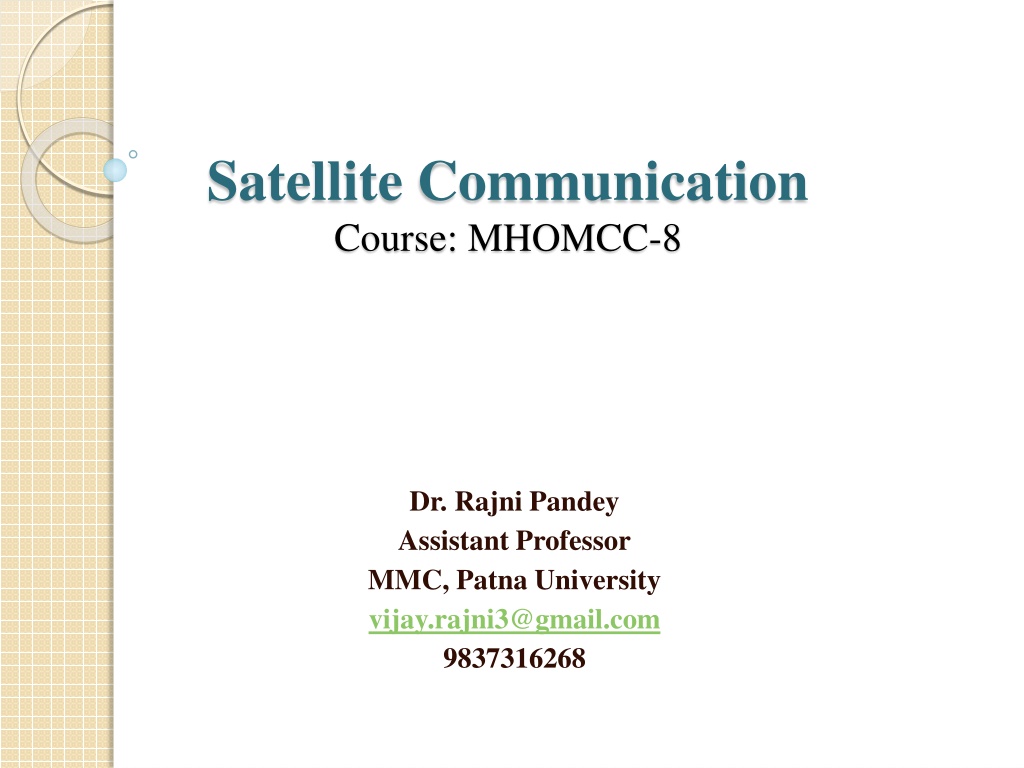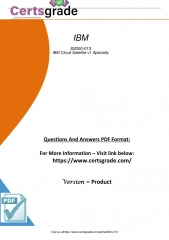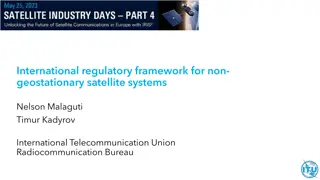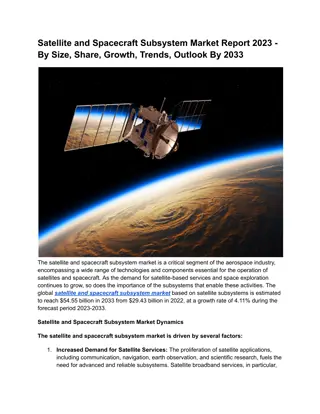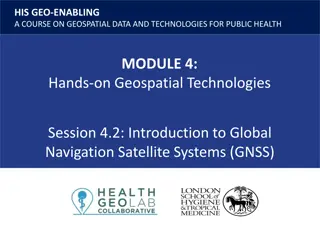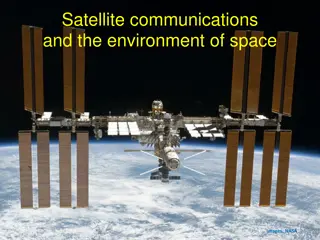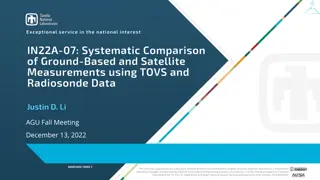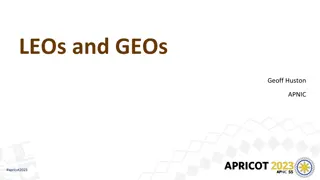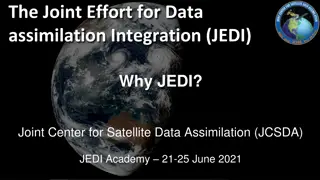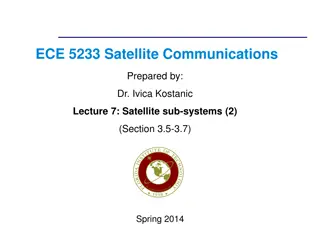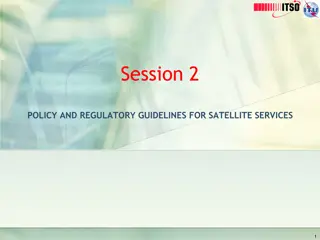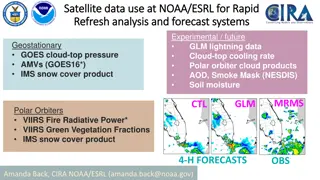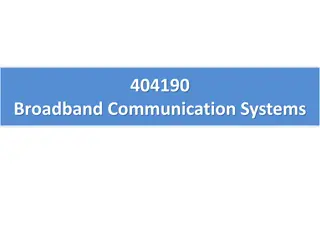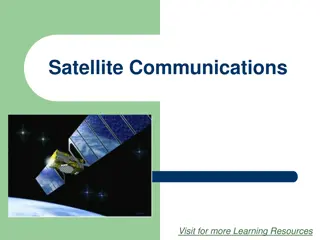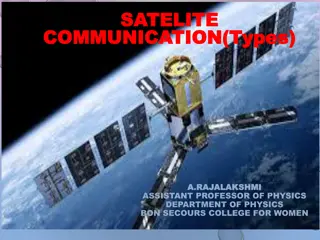Understanding Satellite Communication: Key Concepts and Applications
Satellite communication is a vital technology that involves relaying signals between different locations on Earth through artificial satellites. This communication system has revolutionized various sectors like telecommunication, weather forecasting, resource monitoring, and more. Learn about the working principles of satellites, their types, advantages, disadvantages, and diverse applications in the modern world.
Download Presentation

Please find below an Image/Link to download the presentation.
The content on the website is provided AS IS for your information and personal use only. It may not be sold, licensed, or shared on other websites without obtaining consent from the author. Download presentation by click this link. If you encounter any issues during the download, it is possible that the publisher has removed the file from their server.
E N D
Presentation Transcript
Satellite Communication Course: MHOMCC-8 Dr. Rajni Pandey Assistant Professor MMC, Patna University vijay.rajni3@gmail.com 9837316268
Introduction A satellite communications is an artificial satellite that relays and amplifies radio telecommunication signals via a transponder; communication channel transmitter and a receiver at different locations on Earth. it creates a a between source
Working principle of satellite The fundamental concerning satellites is that a satellite is a projectile. That is to say, a satellite is an object upon which the only force is gravity. Once launched into orbit, the only force governing the motion of a satellite is the force of gravity. principle to be understood
Early Satellites In October 1957,the first artificial satellite Sputnik-1 was launched. 1963 Clark s idea became a reality when the first geosynchronous satellite SYNCOM was successfully launched by NASA. India Launched ARYABHATTA onApril 19,1975. the first satellite
Types of Satellites Satellite are divided in four major categories as follow: Communication Satellite. Weather Satellite. Remote-sensing Satellite. Scientific Satellite.
Advantages The coverage area of a satellite greatly exceeds that of a terrestrial system. Transmission cost of a satellite is independent of the distance from the Centre of the coverage area. Satellite to satellite communication is very precise. Higher bandwidths are available for use.
Disadvantages Launching satellites into orbits is costly. Satellite bandwidth is gradually becoming used up. There is larger propagation delay in satellite communication than communication. in terrestrial
Application of satellite communication The main application of satellite communication is in the field of communication. The communication of video signals(TV), audio signals (telephones, satellite phones) and computer data (internet). To gain meteorological or weather information. The photographs taken by the satellites are analyzed for predicting weather. To monitor the status of earth s resources such as land, forests and oceans. We can get very important information about crops, lakes, rivers, forest fires etc To spot our mineral resources, polluted areas, sources of pollution etc
References www.wikipedia.com https://en.m.wikipedia.org https://www.isro.gov.in
Thanks Thanks
